Popular Pope Francis takes own path in Vatican
- Published
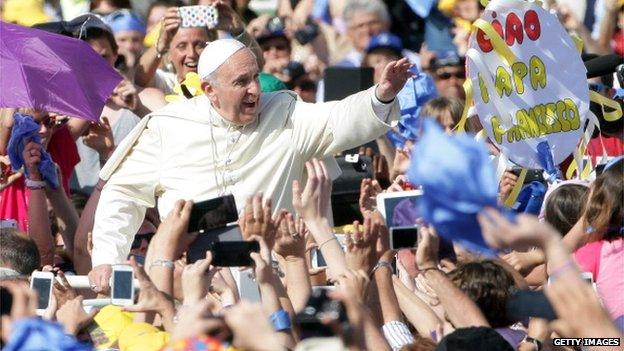
In the course of 2014 Pope Francis consolidated his position as one of the most popular pontiffs of modern times, more popular even than the recently-sainted Pope John Paul II.
He invented a new easy style of communication at the Vatican, brought in fresh blood, and publicly lambasted power-hungry princes of the church - the cardinals and bishops who run the Catholic Church's Rome headquarters; he also found time to play an active diplomatic role in helping the US and Cuba bring to an end 50 years of public enmity.
Following up on his predecessors Pope John Paul's and Pope Benedict's historic visits to Cuba and meetings with Fidel Castro in 1998 and 2012, he helped broker a political deal which made headlines around the world this month.
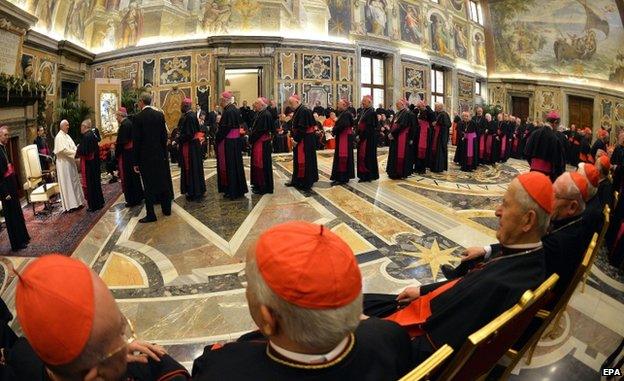
Pope Francis said he had seen a tendency to gossip and show off at the Vatican
Deadly sins
Offering his Christmas greetings to the Roman Curia, the senior churchmen who run the Holy See, Pope Francis, having observed at close quarters for the past 20 months how the Vatican actually works, unexpectedly gave his Roman bureaucrats a severe dressing down.
He listed 15 deadly sins - "ailments" he called them - that he had witnessed since he took office. Too much micro-management, too little internal co-ordination, examples of boastfulness, showing off, claiming to be indispensible, a tendency to gossip and defamation and, even worse, clerics leading double lives.
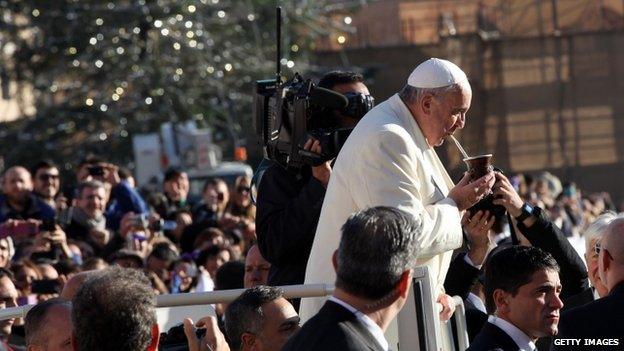
Pope Francis celebrated his 78th birthday this month, sipping one of his favourite Argentinian drinks
According to worldwide polls conducted by the prestigious US-based Pew Research Centre, a majority of people in over half the 43 countries surveyed say they had a positive view of Pope Francis, with particularly high ratings in Europe (84%) and Latin America (72%).
Part of his popularity derives from favourable media comment on his style of communication with his flock and with outsiders, but also with his style of Church government:
He has made it increasingly clear that he has no time for careerism among Catholic clergy and has started to shift long-tenured cardinals and bishops away from the Vatican
He has moved cautiously but effectively to clean up the money-laundering scandal concerning the Vatican Bank, the Institute for Works of Religion (IOR), which had tarnished the image of the church for the past two decades
He installed Australian Cardinal George Pell as overseer of all Vatican finances
From 1 January, new accounting and management practices become operative within all Vatican departments. They will be obliged to draw up detailed annual budgets, which - astonishingly - had never been done in the past
Pope Francis, 78, also inherited long-simmering clergy sex abuse scandals. He began to deal with this by meeting at his home inside the Vatican in July 2014 with a group of six victims from the UK, Ireland and Germany, to whom he offered an unqualified apology for the sins of his priests.
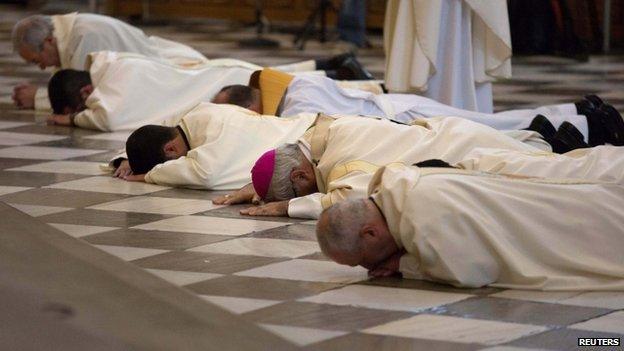
The child sex abuse scandal will be investigated by a panel of nine men and seven women
He also set up a 16-member advisory committee on child protection in the Church, chaired by Cardinal Sean O'Malley of Boston, the American diocese where the clergy sex abuse and cover-up scandal broke most disastrously in 2002.
Among the nine men and seven women representing every continent on the committee are psychiatrists, child protection trainers, male and female religious, and two lay people who as children were actual victims of predator priests.
Hot-button issues
The single most important religious event of the year was his summoning of bishops from all over the world to the first stage of a two-year Vatican debate on the future of the Christian family, challenged by drastic social change. At this October meeting, the Synod, he exhorted bishops not to fear speaking their mind on the hot-button issues on the table.
Among the 65 keenly-debated topics were, inevitably, church divorce (that is, marriage annulment); the admission of remarried divorcees to Communion; and attitudes towards homosexual unions.
.jpg)
No doctrinal decisions will be taken until after the next Synod convenes in 2015
Unlike during previous Synods, taboos were broken, and the agenda, which had formerly been tightly controlled by the Roman Curia was thrown open.
Divisions became apparent, but no doctrinal decisions will be taken by Pope Francis for at least a year, or until after the Synod reconvenes in October 2015. Already further consultations at diocesan and parish level are taking place.
Behind the scenes Pope Francis continued inventing his own way of being pontiff.
He took no holidays. He greeted more than a million visitors at his weekly General Audiences.
From his modest, three-room quarters in the Vatican guest house he frequently telephoned old friends, heads of state, and a random selection of his worldwide flock who had written him letters which he found touching or important.
Not least, he attempted to broker peace in conflicts concerning at least three of the world's crisis centres: unsuccessfully so far in the Middle East and Ukraine, but he was praised by President Barack Obama for his efforts towards restoring relations with Cuba.
Globetrotter
During 2014 Pope Francis became an active globetrotter despite an initial aversion to continuing the tradition of papal travel initiated by John Paul II and continued by former Pope Benedict XVI.
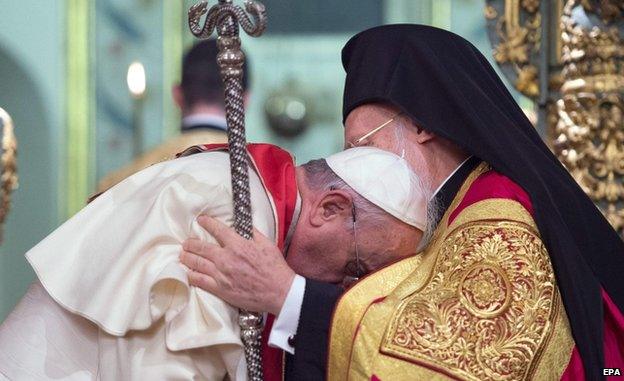
Pope Francis (L) found a close ally in Turkey in Patriarch Bartholomew of the Eastern Orthodox Church
In May he visited the Holy Land; in August, South Korea; in September, Albania; and in November, both Strasbourg and Turkey.
He also made four visits within Italy, which took him from Italy's northern Alpine frontier with Austria, where he commemorated the centenary of World War One, to a Mafia crime-ridden town on the Ionian sea in the deep south.
For the coming year, he has already planned trips to Sri Lanka, the Philippines, Bolivia and two as yet unspecified countries in South America, an as yet unnamed African country and, in September, to the United States, including a speech to the United Nations in New York.
Perhaps Pope Francis's most significant quote of the year was during a recent interview with La Nacion, a newspaper from his home town in Argentina, Buenos Aires.
Acknowledging internal resistance to his planned reforms, he said: "It's a good sign for me, getting the resistance out into the open, no stealthy mumbling when there is disagreement. It's very healthy to get things out into the open!"
- Published7 January 2014
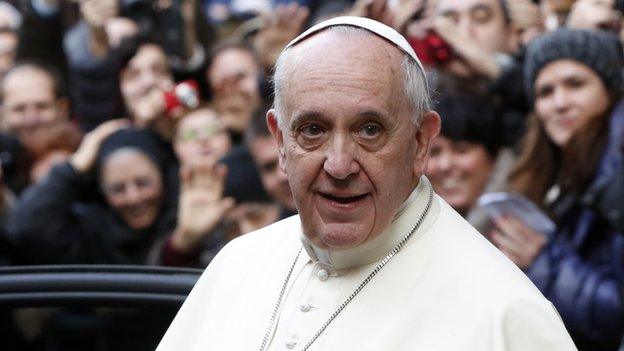
- Published17 December 2014
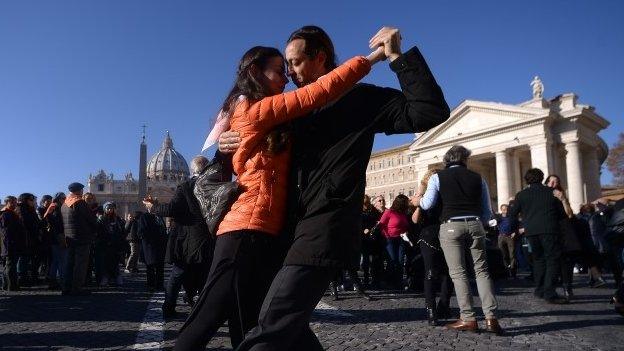
- Published5 December 2014
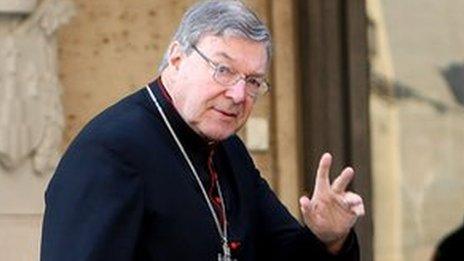
- Published2 December 2014
